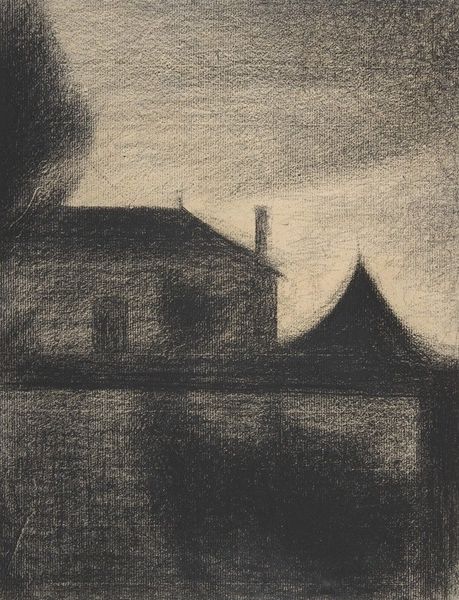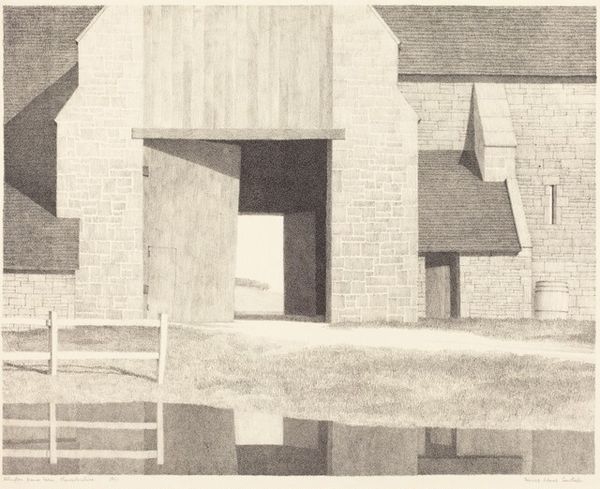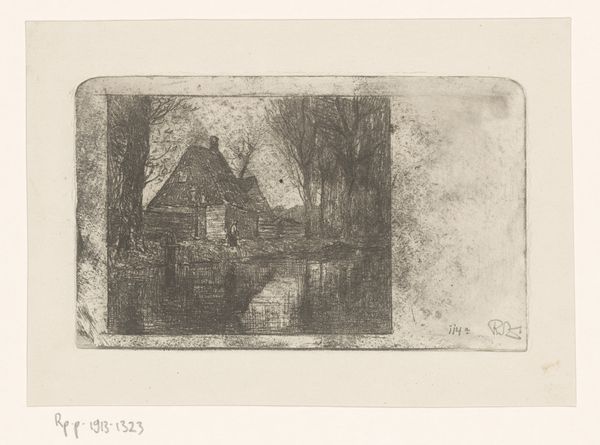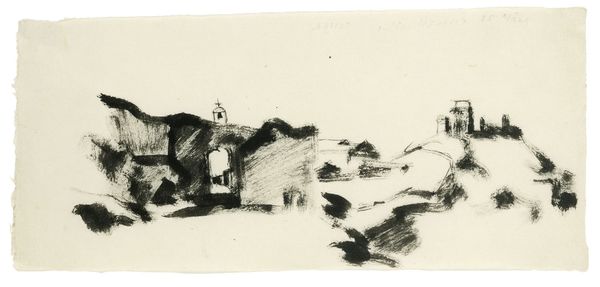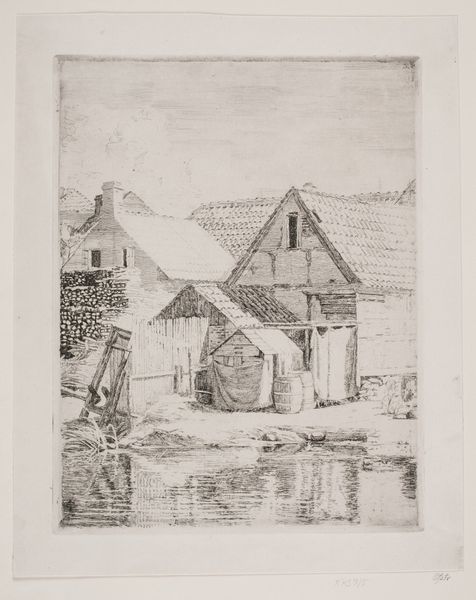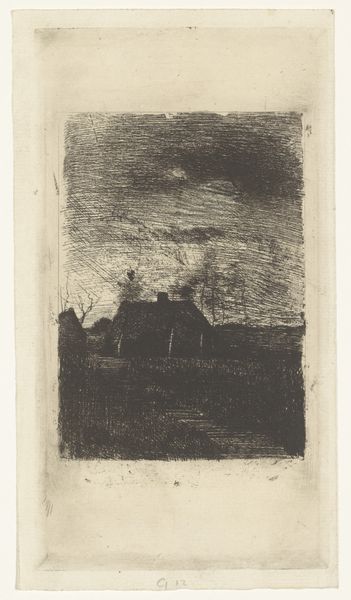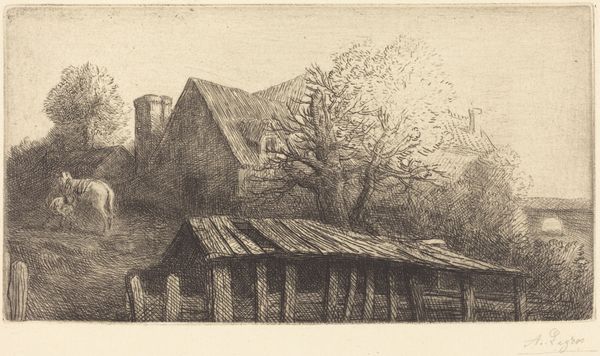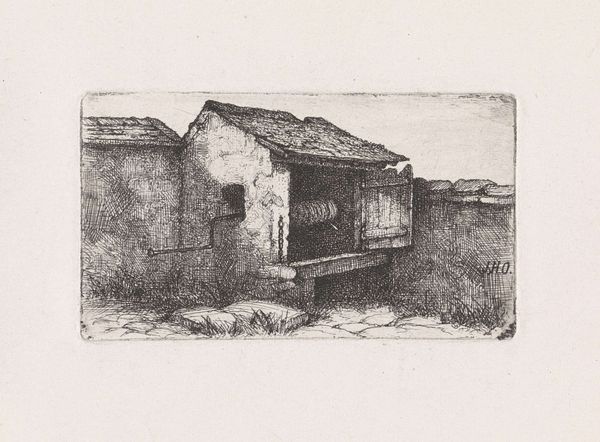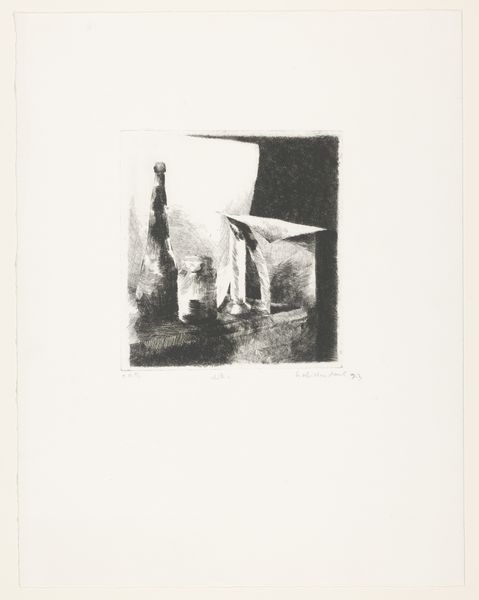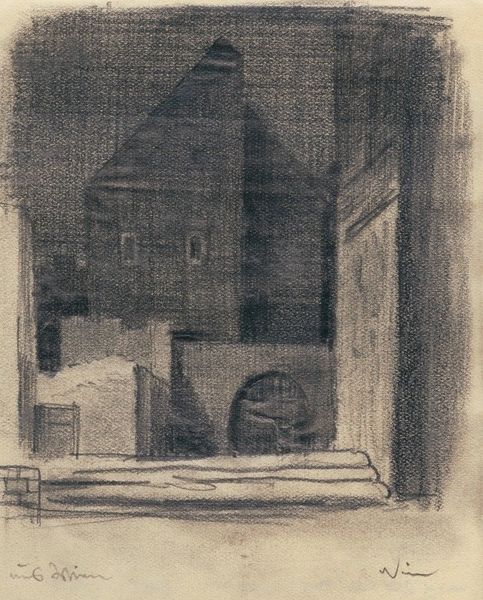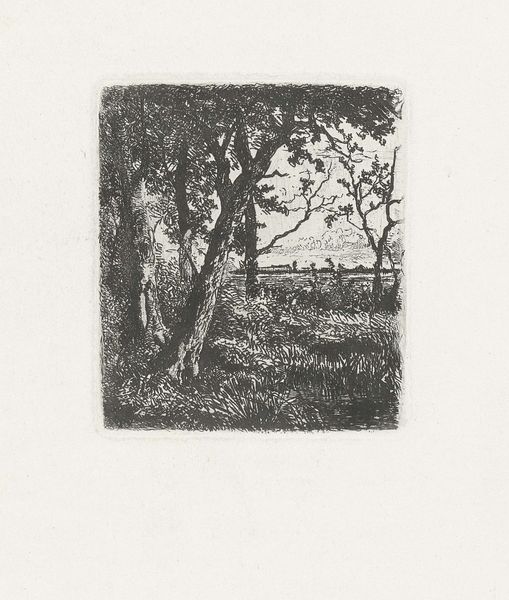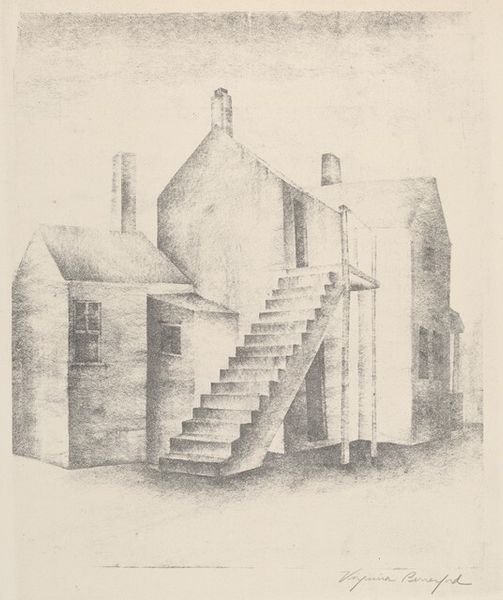
print, etching
#
pencil drawn
# print
#
etching
#
pencil sketch
#
landscape
#
form
#
geometric
#
line
#
cityscape
#
italian-renaissance
#
modernism
Dimensions: plate: 15.7 x 15.6 cm (6 3/16 x 6 1/8 in.) sheet: 22.2 x 27.1 cm (8 3/4 x 10 11/16 in.)
Copyright: National Gallery of Art: CC0 1.0
Giorgio Morandi created this etching titled "Landscape (Chiesanuova)" in 1926. Morandi, an Italian artist, lived through both World Wars and witnessed Italy's shift to Fascism, yet his work rarely engaged directly with political events. Instead, Morandi focused on intimate, contemplative studies of light, form, and composition. The hatching technique, reminiscent of earlier printmaking traditions, gives the scene a timeless quality. The landscape, devoid of people, becomes a stage for exploring the relationships between the buildings, the trees, and the light. Morandi's art can be seen as a quiet rebellion against the prevailing artistic trends and political ideologies of his time. He withdrew from the increasingly polarized world, finding solace and meaning in the careful observation of everyday objects and simple landscapes. To understand Morandi fully, we delve into the history of early twentieth-century Italian art, examining the influence of Futurism and the "return to order" movement. By studying his personal writings and the critical reception of his work, we can better appreciate the social context that shaped his artistic vision.
Comments
No comments
Be the first to comment and join the conversation on the ultimate creative platform.
